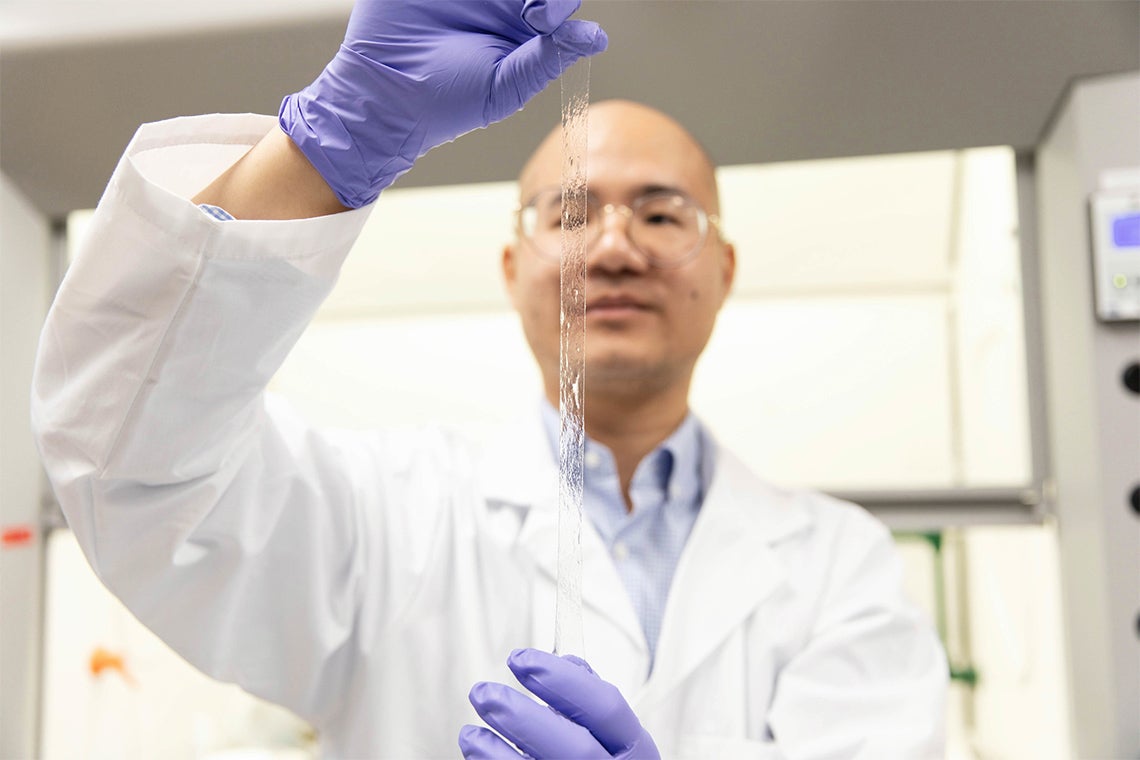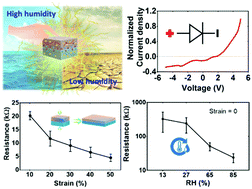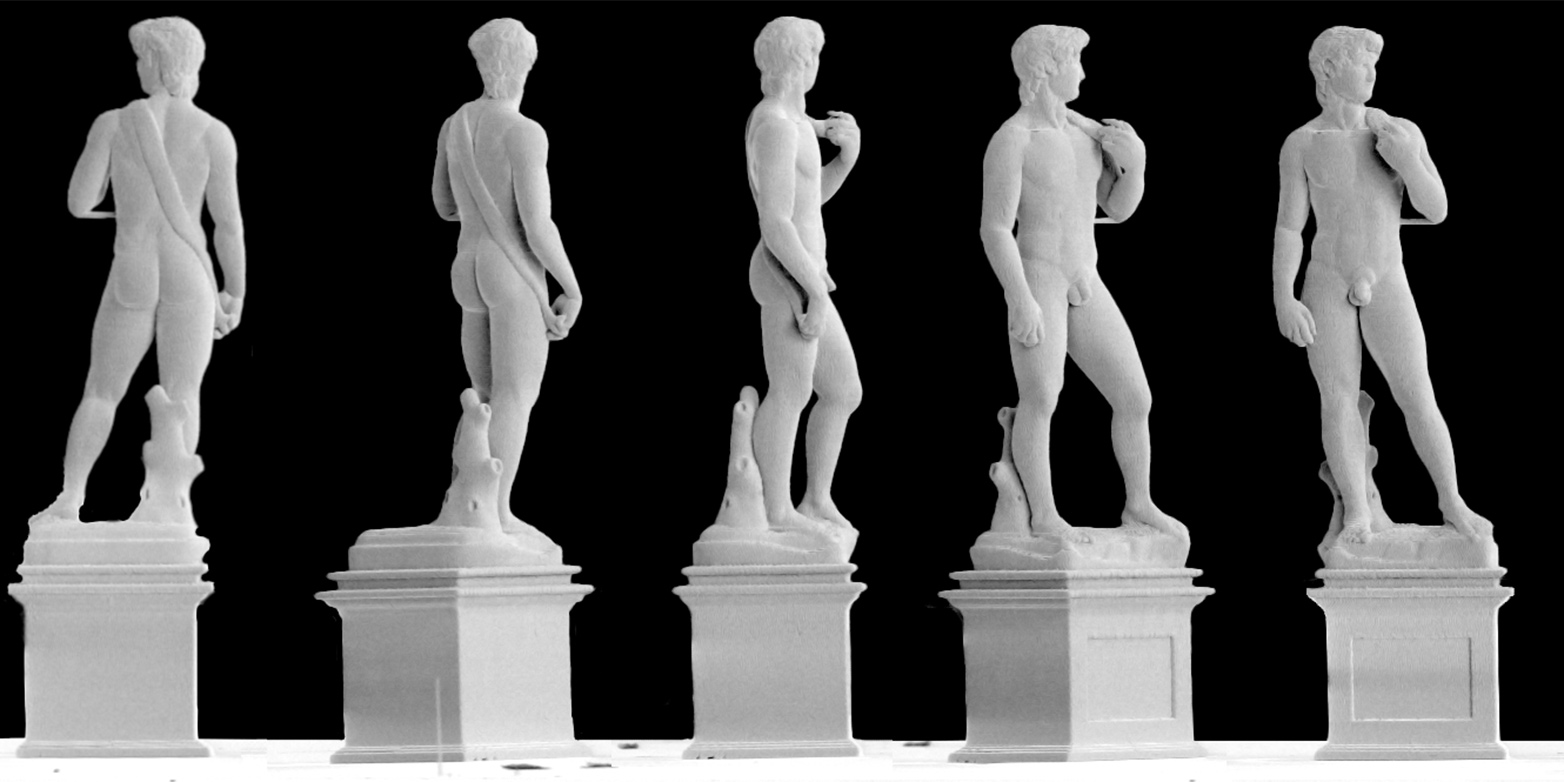(Skin-like sensors bring a human touch to wearable tech)
2020/1/8 カナダ・トロント大学 
・ トロント大学が、ストレッチャブルな透明人工イオニックスキン、「Alskin」を開発。
・ 人間の皮膚のように複雑な知覚を感知する自家発電型センサーで、ウェアラブルエレクトロニクス、パーソナルヘルスケアやロボティクスの進展の可能性が期待できる。
・ 安価で生体適合性の Alskin は、極めて強力な粘着力で皮膚に安全に貼り付けられる。正と負にそれぞれ帯電するストレッチャブルな 2 枚のハイドロゲルシートを張り合わせ、ゲル表面に「センシング接合」を作った。
・ 歪み、湿度や温度の変化に反応することで、センシング接合を横断するイオンの挙動を電圧や電流等の電気信号として計測する。熱や圧力を感知すると、神経細胞がイオンを通じて情報を伝達する人間の皮膚に類似した働きをする。自身の長さの 400%まで引き伸ばしが可能。
・ 身体の様々なパラメータを計測する皮膚のような Fitbits や、皮膚に直接貼り付けられるタッチパッドとしての利用が考えれる。また、リハビリ中の患者が着用する手袋に貼り付ければ、ヘルスケアワーカーが指の動き等をモニタリングできる。
・ また、デリケートな電球や食品を扱う工場用のソフトロボットグリッパー等、完全ポリマー製のフレキシブルなソフトロボティクスでのアプリケーションも可能。Alskin をソフトロボットに統合し、食品の温度や壊れやすいオブジェクトの扱いに必要な圧力等のデータ測定を想定。
・次年にかけて Alskin の開発をさらに進め、マイクロファブリケーションによるセンサーの小型化を図
る。また、汗等の体液に含まれる生体分子を測定するバイオセンシング機能も付与する予定。
・本研究は、カナダ自然科学・工学研究会議(NSERC)およびカナダ・イノベーション財団(CFI)が支援した。
URL:https://www.utoronto.ca/news/stretchy-skin-sensors-developed-u-t-researchers-bring-human-touch-wearable-tech
(関連情報)
Materials Horizons 掲載論文(アブストラクトのみ:全文は有料)
An ambient-stable and stretchable ionic skin with multimodal sensation
URL: http://dx.doi.org/10.1039/C9MH00715F
<NEDO海外技術情報より>
Abstract
Skin serves as a physical and hygroscopic barrier to protect the inner body, and also contains sensory receptors to perceive environmental and mechanical stimuli. To recapitulate these salient features, hydrogel-based artificial skins have been developed. However, existing designs are constrained by limited functionality, low stability, and requirement of external power. Herein, a novel artificial ionic skin (AIskin) – an analog of the diode based on controlled ion mobility – is demonstrated with high toughness, stretchability, ambient stability and transparency. The AIskin consists of a bilayer of oppositely-charged, double-network hydrogel, and converts mechanical stimuli and humidity into signals of resistance, capacitance, open-circuit voltage (OCV), and short-circuit current (SCC), among which the OCV- and SCC-based sensing signals are self-generated. Its multimodal sensation is maintained in a wide range of relative humidities (13–85%). It is demonstrated for wearable strain-humidity sensing, human–machine interaction and walking energy harvesting. This work will open new avenues toward next-generation, skin-inspired wearable electronics.




